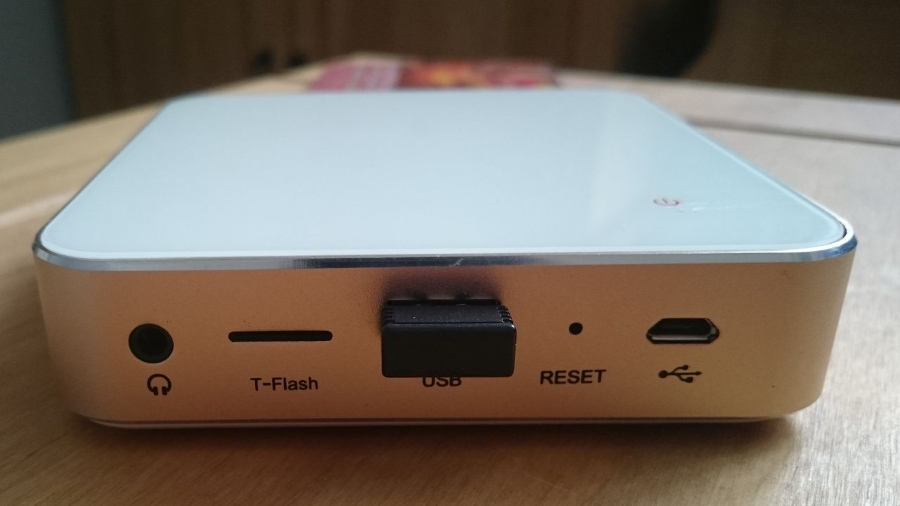Early Verdict
This mini-PC with projector offers an impressive image quality for its size, but the finish and software quality are lacking.
Pros
- +
Nicely portable
- +
Bundled remote control
- +
Impressive image quality
Cons
- -
Rubber feet are prone to falling off
- -
Non-standard version of Android
- -
Sending back for repairs could be problematic
Why you can trust TechRadar
Most of us already have a fully-formed computer in our pockets. It's called a smartphone and while its performance, connectivity and storage capacity have improved tremendously over the past few years, there's one physical variable that's barely changed: the screen size.
Anything bigger than 5.5-inch and the smartphone becomes unwieldy and starts looking like a tablet. If you want to have a much, much bigger display, handheld projectors are the way to go, the Mini-Ray being one example. Push the integration a bit further and you get something like the PaPa H3000.
Although it is listed as a projector by its vendor, Gearbest (before you commit to any purchase, it's well worth checking out our guide to buying tech from online Chinese retailers), it isn't technically one, just like a laptop is not a monitor. You cannot connect any computers to it out of the box to project pictures. Instead, this device comes with its own integrated computer.
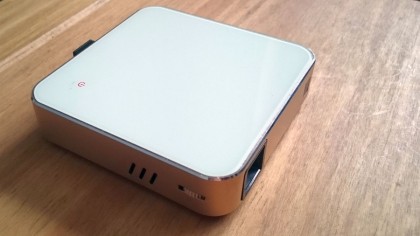
Yes, a fully-formed and completely functional computer. Based on Android v4.4.2, it is powered by an ARM-based, quad-core processor with an 8-core GPU, complemented with 1GB of RAM and 8GB of system storage.
The projector itself is about the size of an Apple TV unit (100 x 100 x 22mm) and weighs around 220g. All in all, a very portable solution. True, you won't be able to shove it in your jeans pockets but it will easily fit in a handbag or an overcoat pocket.
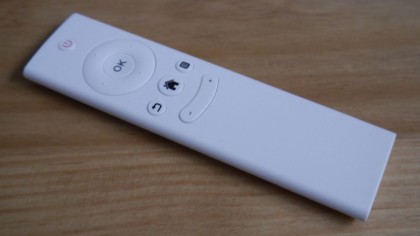
You have to factor in an optional input device (keyboard, mouse) and an optional tripod/stand, which easily doubles the weight of the product and actually makes it useful. Note that there is a bundled remote control with the package featuring limited functionality (you can't use it to type for example).
PaPa opted for a gold champagne finish with a glossy, touch-sensitive top panel. The latter plays host to four arrow keys, the power, home, options and back buttons, the last three being the default navigation controls on Android.
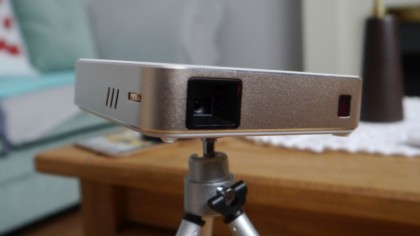
The projector window and the IR receiver are on one side panel, with a rotary button (to control the focus), an audio port, a microSD card slot, a USB connector, a reset button and a microUSB port (which can be used for charging) on the others.
Flip it over and you're faced with four tiny white rubber feet which have a tendency to come off too easily.
The rest of the specification list includes a built-in Lithium-Ion battery with a 3000mAh capacity (which can even be used to charge your phone), 802.11n Wi-Fi, Bluetooth 4.0 and one speaker. We achieved just under one hour of video playing time (using a YouTube clip).

The projector has a rated 2000-lumens brightness (which is more than a typical 100W incandescent bulb can achieve), a 1000:1 contrast ratio and an estimated 30,000-hour service light. It delivers a 16:9, 854 x 480-pixel picture, which is what you'd expect from an entry-level Android device.
We used a wireless mini-keyboard with an integrated touchpad and a laser pointer (just a tenner at Visopix with free worldwide delivery). Just plug its accompanying USB receiver in the full-size USB port on the H3000 and the OS detects the input peripheral straight away.
Speaking of the OS, it is still Android, but not your typical version. The manufacturer chose to go the minimalist way and since it is a Chinese build, it lacks the default Google apps like Chrome, Gmail or YouTube.
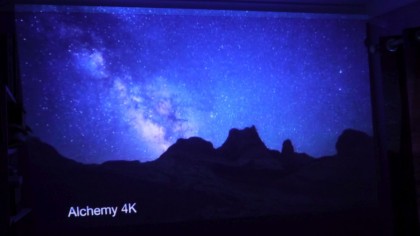
The start screen contains only five shortcuts, including a browser and a file manager. There's Google Play and while we didn't try it, it is likely that you will be able to augment the functionality of the H3000 by adding more apps.
Playing movies is where this device excels – it uses TI DLP technology to deliver what can safely be described as a very decent image quality. Its output is definitely far superior to any pico-projector we've seen recently.
Early verdict
The PaPa H3000 is a very promising product but one which ultimately fails to deliver for a host of reasons. At £151 including shipping (around $220, or AU$285), it is reasonably affordable although we're almost certain that you can actually get it for cheaper by switching to the HaiWay H3000 which retails for only £108 (around $158, or AU$204) from the same retailer.
The lack of finesse (plastic feet coming off), the fact that you can't use it out of the box without a keyboard, added to which you can't use it as a standalone projector (believe it or not) are some of the shortcomings here. The non-standard operating system doesn't help either.
In addition, should you run into any issues with this projector, returning it is likely to be convoluted. Gearbest is no Argos or Currys – not only are you liable for VAT and processing fees, the buyer must pay the shipping fees for sending the item back, while Gearbest pays for the shipping fees for sending the repaired item back to the buyer. This is a commonplace practice on auction websites and non-UK websites.
The truth though is that there is no comparable product on the market right now. It is the only one that we know about that offers such vibrant, bright and rich pictures, untethered.
Others will need an external power source and will be separate from the computer unit. And while its battery life is short, the H3000 is perfect for presentations (who wants a one-hour presentation anyway?) and you can always top it up using your smartphone or a portable battery.

Désiré has been musing and writing about technology during a career spanning four decades. He dabbled in website builders and web hosting when DHTML and frames were in vogue and started narrating about the impact of technology on society just before the start of the Y2K hysteria at the turn of the last millennium.
What is a hands on review?
Hands on reviews' are a journalist's first impressions of a piece of kit based on spending some time with it. It may be just a few moments, or a few hours. The important thing is we have been able to play with it ourselves and can give you some sense of what it's like to use, even if it's only an embryonic view. For more information, see TechRadar's Reviews Guarantee.
